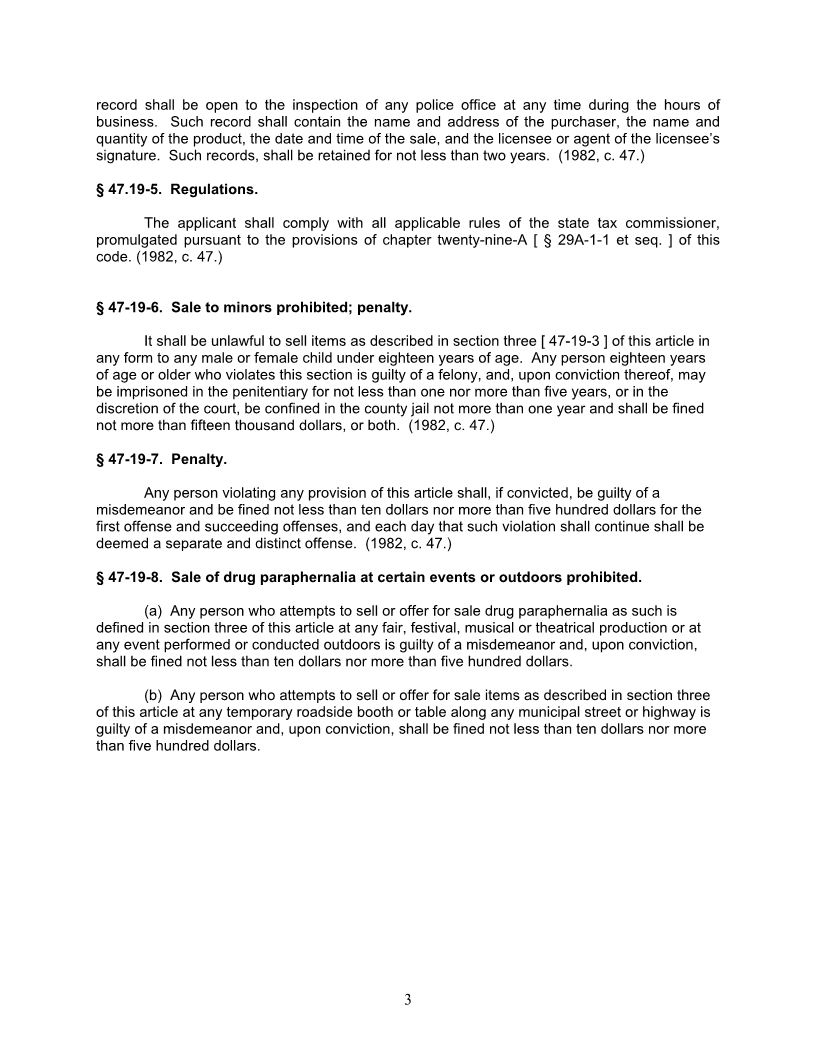
Enlarge image
WV/DRUG 3
Org. 12/05
ARTICLE 19.
DRUG PARAPHERNALIA
SEC.
47-19-1 Items designed or marketed for use with controlled substances,
license required.
47-19-2 Application.
47-19-3 Drug paraphernalia defined.
47-19-4 Records.
47-19-5 Regulations.
47-19-6 Sales to minors prohibited, penalty.
47-19-7 Penalty
47-19-8 Severability.
Cross references. – Contraband forfeiture, c. 60A, art 7.
§ 47-19-1. Items designed or marketed for use with controlled substances; license
required.
It shall be unlawful for any person or persons as principal, clerk, agent or servant to sell
any items, effect, paraphernalia, accessory or thing which is designed or marketed for use with
controlled substances, as defined in chapter sixty-A [ § 60A-1-101 et seq. ] of this Code, without
obtaining a license therefore from the state tax commissioner. Such licenses shall be in
addition to any or all other licenses held by applicant. The fee for such license shall be one
hundred fifty dollars. (1982, c. 47.)
§ 47-19-2. Application.
Application to sell any item, effect, paraphernalia, accessory or thing which is designed
or marketed for use with controlled substances shall be accompanied by affidavits by applicant
and each and every employee authorized to sell such items that such person has never been
convicted of a drug-related offense. (1982, c. 47.)
§ 47-19-3. Drug paraphernalia defined.
(a) The following items, if marketed for use or designed for use with controlled
substances, are considered drug paraphernalia for the purpose stated in section one [ § 47-19-
1] of this article:
1. Kits marketed for use, or designed for use in planting, propagating, cultivating, growing,
or harvesting of any species of plant which is controlled substance or from which a
controlled substance can be derived;
2. Kits marketed for use, or designed for use in manufacturing, compounding, converting,
producing, processing or preparing controlled substances;
3. Isomerization devices marketed for use, or designed for use in increasing the potency of
any species of plant which is a controlled substance;
1

